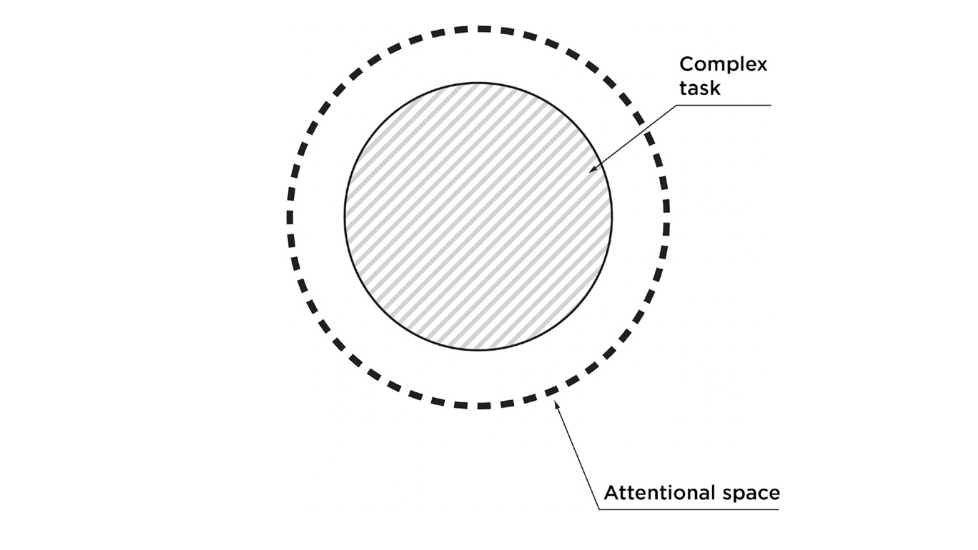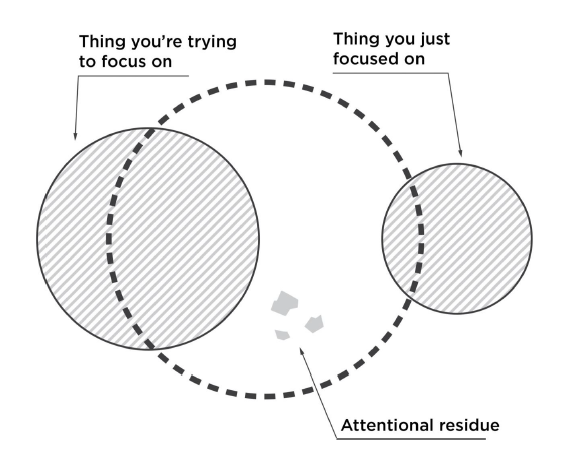Related: Hyperfocus by Chris Bailey
Attentional Space
Attentional space is like mental real estate. It’s our available capacity to focus on things in the moment.
Different tasks take up different amounts of attentional space
- Habits = very little, because they can be automated (r.e. classically conditioned). They require attentional space to be initiated or for course-correction during one
- complex tasks = takes a lot of space

Attentional Residue
It’s hard for the brain to switch tasks. Part of our attention stays on the old task, even when you’re trying to focus on something else. Attentional residue is when “part of our attention is focused on another task instead of being fully devoted to the current task”. It’s the cognitive cost of “switching gears.” Term developed by Dr. Sophie Leroy
This means you’ll have less bandwidth (i.e. less cognitive resources) to use on the new task, and performance will likely suffer. Doubly so if the new task is also cognitively demanding.

links to mood
- positive moods tend to increase attentional space
- negative moods tend to decrease it
Avoid filling your attentional space completely!
- filling our attentional space with multiple things negatively affects us!
- it’s harder to “switch gears” and filter out irrelevant info
- we also get worse at policing ourselves to stay focused on one task
Food for thought: I wonder how checking social media first thing in the morning relates to attentional space?